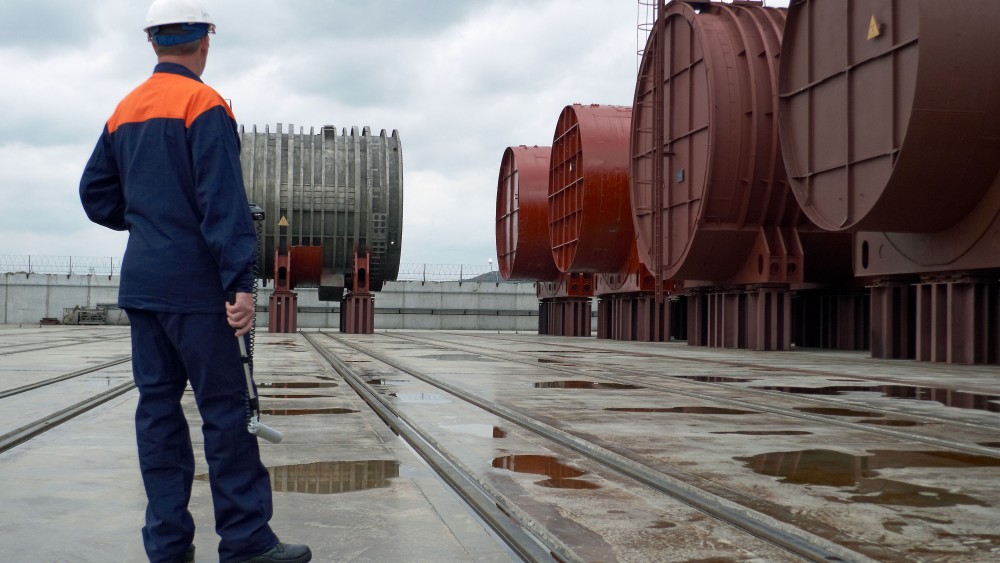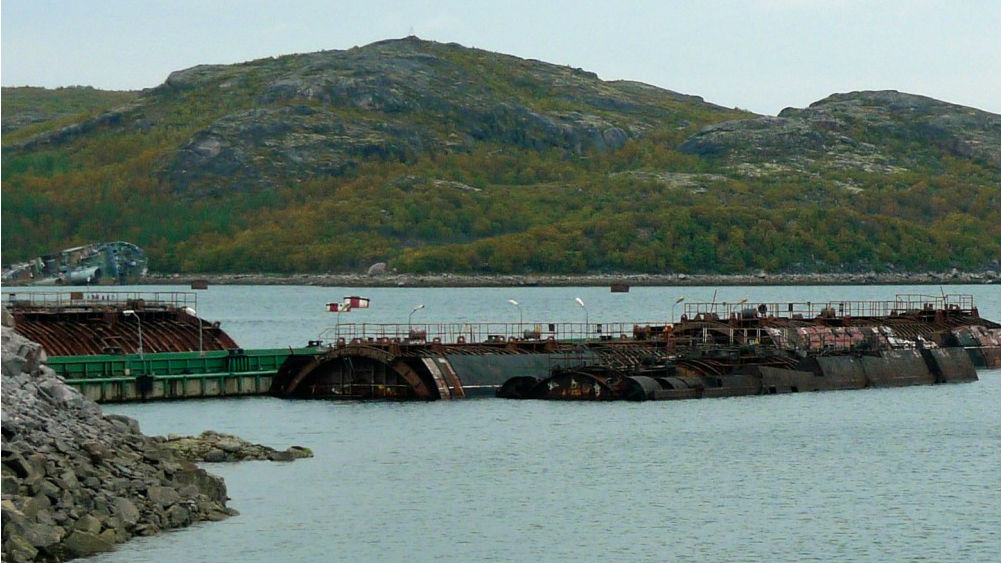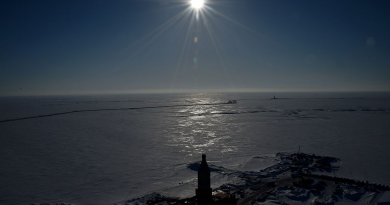Last Soviet nuclear-sub reactor lifted onshore

The Barents Sea is safer as the era of storing radioactive reactor compartments on water comes to an end.
On the night of August 8, the last of 120 reactor compartments from Cold War submarines was docked and brought safely into the storage pad in Saida Bay on the Kola Peninsula.
SevRAO, the northern branch of Russia’s State radioactive waste management company, informs that bringing the last reactors onshore improves the environmental situation in the Barents Sea.
The compartment, holding two reactors, origin from one of the larger nuclear powered submarines of the Northern Fleet. It will now be prepared for long-term storage at the huge pad in Saida Bay which from before holds at least 116 reactor compartments.
Most Soviet-built nuclear-powered submarines had two reactors each, bringing the total reactors stored at the site up to nearly 200.

Kursk submarine reactor
Last year, RosRao’s Chief Engineer said the very last reactor compartment to be taken onshore would be the one from the Kursk submarine that sank in the Barents Sea in August 2000 during a naval exercise. The submarine was lifted from the seabed two years later and the remaining parts of the hull were scrapped.
It is, however, only known that the Kursk compartment became one of the last of the three remaining reactor compartments that were stored on waters just outside the facility.
A satellite photo from last summer shows that the storage pad in Saida Bay soon is filled to capacity.
A decades-long process
Although the spent nuclear fuel elements are removed, the reactor itself is radioactive and has to be treated with special care to avoid leakages to the environment. When floating, one fear was to see the reactors sink and being flooded with water.
The process of scrapping the 120 nuclear-powered submarines that sailed out from bases on the Kola Peninsula during the Cold War started in the early 1990 and has technically and economically been supported by a wide range of countries, including Norway and the European Union.
The storage site in Saida Bay is financed by Germany as part of the Global Partnership Against the Spread of Weapons and Materials of Mass Destruction. Italy has paid for the floating dock that brings the reactor-compartments from the waters to the site.
Additional to reactors from military submarines, the site will also hold icebreaker reactors and radioactive sections from military and civilian service vessels, like the Lepse and the icebreakers Sibir and Arktika.
The reactor compartments will have to be stored for onshore for many decades before the radioactivity have come down to levels acceptable for cutting the reactors’ metal up and pack it for final geological disposal.
Renewing nuclear-powered fleet
While the old submarines are scrapped, Russia is today building more nuclear-powered vessels than ever before since the end of the Cold War.
The Barents Observer has recently published an overview (pdf) listing the increasing number of reactors in the Russian Arctic. The paper is part of Barents Observer’s analytical popular science studies on developments in the Euro-Arctic Region.
According to the list there are 39 nuclear-powered vessels or installations in the Russian Arctic today with a total of 62 reactors. This includes 31 submarines, one surface warship, five icebreakers, two onshore and one floating nuclear power plants.
Looking 15 years ahead, the number of ships, including submarines, and installations powered by reactors is estimated to increase to 74 with a total of 94 reactors, maybe as many as 114. Additional to new icebreakers and submarines already under construction, Russia is brushing dust of older Soviet ideas of utilizing nuclear-power for different kind of Arctic shelf industrial developments, like oil- and gas exploration, mining and research. “By 2035, the Russian Arctic will be the most nuclearized waters on the planet,” the paper reads.
Also, existing icebreakers and submarines get life-time prolongation. The average age of the Northern Fleet’s nuclear-powered submarines has never been older than today. Several of the submarines built in the 1980s will continue to sail the Barents Sea and under the Arctic ice-cap until the late 2020s.
Related stories from around the North:
China: Details of China’s nuclear-powered icebreaker revealed, The Independent Barents Observer
Finland: Nuclear waste company plans major investment at disposal site in southwest Finland, Yle News
Norway: Radiation seeping out from 30-year-old nuclear-sub wreck in Norwegian Sea, The Independent Barents Observer
Russia: July fire damage to Russia’s secret Losharik sub detailed, The Independent Barents Observer
United States: Between Militarization and Disarmament: Constructing Peace in the Arctic, Blog by Heather Exner-Pirot



